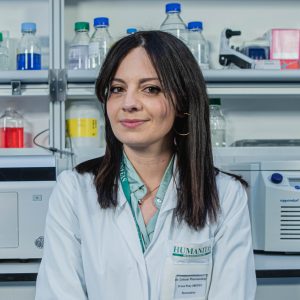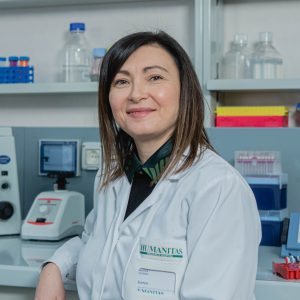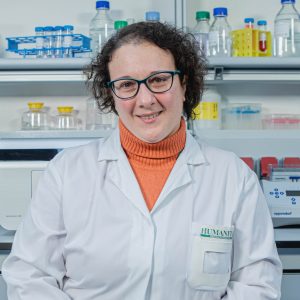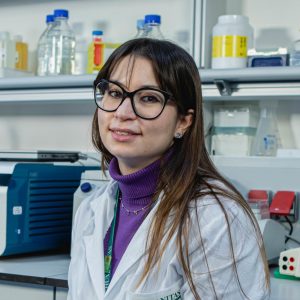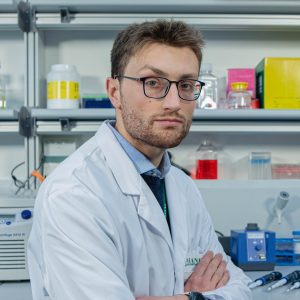Research Group
D’Incalci Group
Cancer Pharmacology Lab
Combining omics techniques, in-vitro pharmacological assays and drug concentration measurements in patients’ samples – collected thanks to the continuous collaboration with clinicians – our research group aims to identify molecular targets for novel cancer drugs, and diagnostic, prognostic and predictive biomarkers.
The challenge
Cancer is not a single disease, but many different diseases with their own risk factors, prognosis, survival rates and molecular underpinnings. Understanding these specificities and designing new therapies able to hijack cancer cells is extremely complex and require both a high-tech multidisciplinary approach and a translational one, based on a strict collaboration between pharmacologist, biotechnologists, oncologist and pathologists. Cancer is also a time-dependent disease, that can radically transform itself with time, becoming less and less responsive to therapies: this is why the future of cancer pharmacology is in early diagnosis and rational drug combinations.
Facing this challenge would be impossible without the active involvement of patients associations and the commitment of Foundations such as Fondazione Alessandra Bono, that continuously support our work.
Main research areas
Enhancing drug penetration in the neoplastic tissues
Drug concentration at the target tissue is a key determinant for any active drug. We are developing sensitive analytical methods based on mass spectrometry (MS) to measure the drug concentration in the whole tumor and even to visualize drug distribution in the tumor tissue (MS imaging). By applying these technologies, we want to investigate how new approaches, such as antibodies-drug conjugates and smart drug combination with distribution enhancers, can improve the penetration of anticancer agents.
Early detection of ovarian cancer
Ovarian cancer, in particular the high-grade serous (HGSOC) type, is characterized by poor prognosis, mainly due to advanced stage diagnosis. It has been proven that HGSOC cells from ovarian surface or Fallopian tubes reach the cervical canal at a very initial phase. We are developing a non-invasive test for early diagnosis of HGSOC based on the recognition, in the DNA retrieved from cervical smears, of tumor-specific molecular aberrations using innovative NGS techniques.
Improving therapeutic choices in ovarian cancer
PARP inhibitors have been recently introduced in the front line setting of HGSOC therapy, but only patients with tumors deficient in the homologous recombination pathway demonstrated a survival advantage. We want to develop an improved test for the selection at diagnosis of HGSOC patients that can benefit from PARP inhibitors. In parallel, we are investigating whether liquid biopsy can not only intercept the early onset of relapse, but also capture the major biological features of relapsed disease on which to base the therapeutic strategy.
Identifying new effective therapies for mesothelioma
Pleural mesothelioma is a rare cancer with few effective therapeutic options. Tumor Treating Fields (TTFields) are low intensity, intermediate frequency, alternating electric fields that recently proved to be effective against pleural mesothelioma in combination with chemotherapy. To enhance TTFields’ efficacy, we want to deeply understand their effects on cancer cells and tumor microenvironment, as well as their interaction with other anticancer drugs.
Optimizing the efficacy of marine-derived trabectedin against liposarcoma
The high activity of the marine natural product trabectedin against liposarcoma, which we discovered many decades ago and helped translate in the clinical setting, is related to its ability to induce adipocytic differentiation. Our preclinical evidence suggests that the combination of trabectedin and the PPARϒ agonist pioglitazone activates adipocytic differentiation even in the case of liposarcoma that respond poorly to trabectedin. We want to optimize this combination and test its efficacy in the clinical setting.
Selected publications
A comprehensive investigation of histotype-specific microRNA and their variants in Stage I epithelial ovarian cancers.
Alternative academic approaches for testing homologous recombination deficiency in ovarian cancer in the MITO16A/MaNGO-OV2 trial.
Copy number alterations in stage I epithelial ovarian cancer highlight three genomic patterns associated with prognosis.
Targeted Mutational Analysis of Circulating Tumor DNA to Decipher Temporal Heterogeneity of High-Grade Serous Ovarian Cancer.
Tumor treating fields affect mesothelioma cell proliferation by exerting histotype-dependent cell cycle checkpoint activations and transcriptional modulations.
Epithelioid Pleural Mesothelioma Is Characterized by Tertiary Lymphoid Structures in Long Survivors: Results from the MATCH Study.
Effects of the Anti-Tumor Agents Trabectedin and Lurbinectedin on Immune Cells of the Tumor Microenvironment.
Inhibition of tumor-associated macrophages by trabectedin improves the antitumor adaptive immunity in response to anti-PD-1 therapy.
Trabectedin in Malignant Pleural Mesothelioma: Results From the Multicentre, Single Arm, Phase II ATREUS Study.
Genome-wide Copy-number Alterations in Circulating Tumor DNA as a Novel Biomarker for Patients with High-grade Serous Ovarian Cancer.
Detection of TP53 Clonal Variants in Papanicolaou Test Samples Collected up to 6 Years Prior to High-Grade Serous Epithelial Ovarian Cancer Diagnosis.
Combination of PPARγ Agonist Pioglitazone and Trabectedin Induce Adipocyte Differentiation to Overcome Trabectedin Resistance in Myxoid Liposarcomas.
Multicenter, randomised, open-label, non-comparative phase 2 trial on the efficacy and safety of the combination of bevacizumab and trabectedin with or without carboplatin in women with partially platinum-sensitive recurrent ovarian cancer.
Establishment and characterisation of a new patient-derived model of myxoid liposarcoma with acquired resistance to trabectedin.
Lurbinectedin reduces tumour-associated macrophages and the inflammatory tumour microenvironment in preclinical models.
Promising in vivo efficacy of the BET bromodomain inhibitor OTX015/MK-8628 in malignant pleural mesothelioma xenografts.
Heterogeneity of paclitaxel distribution in different tumor models assessed by MALDI mass spectrometry imaging.
Identification of high-grade serous ovarian cancer miRNA species associated with survival and drug response in patients receiving neoadjuvant chemotherapy: a retrospective longitudinal analysis using matched tumor biopsies.
Profiling cancer gene mutations in longitudinal epithelial ovarian cancer biopsies by targeted next-generation sequencing: a retrospective study.
Mode of action of trabectedin in myxoid liposarcomas.
MiRNA landscape in stage I epithelial ovarian cancer defines the histotype specificities.
Role of macrophage targeting in the antitumor activity of trabectedin.
Resistance to platinum-based chemotherapy is associated with epithelial to mesenchymal transition in epithelial ovarian cancer.
Group members
